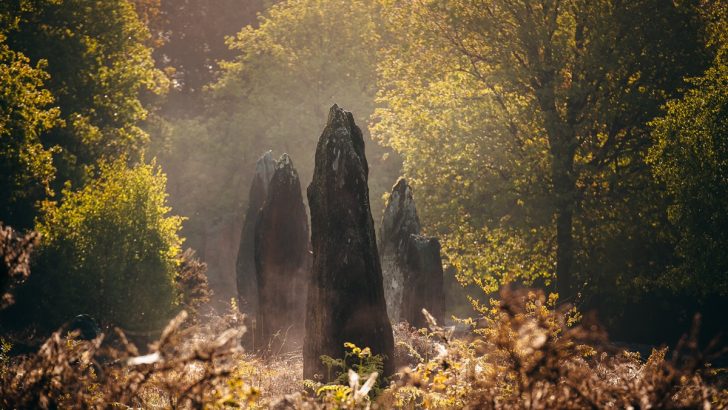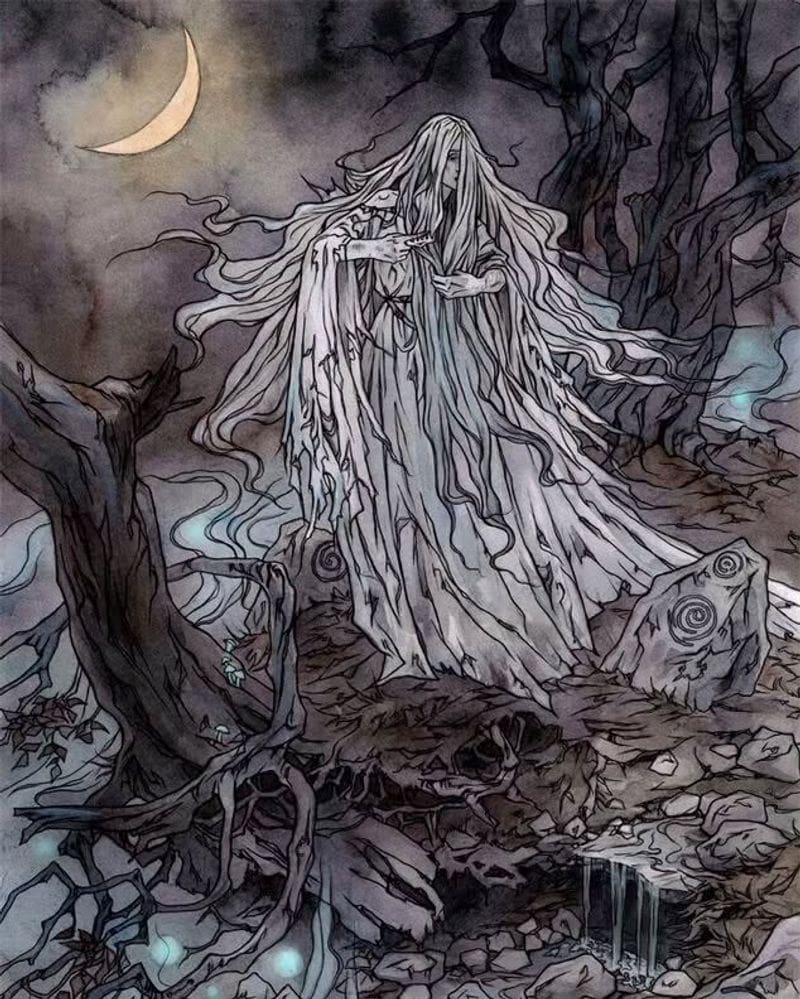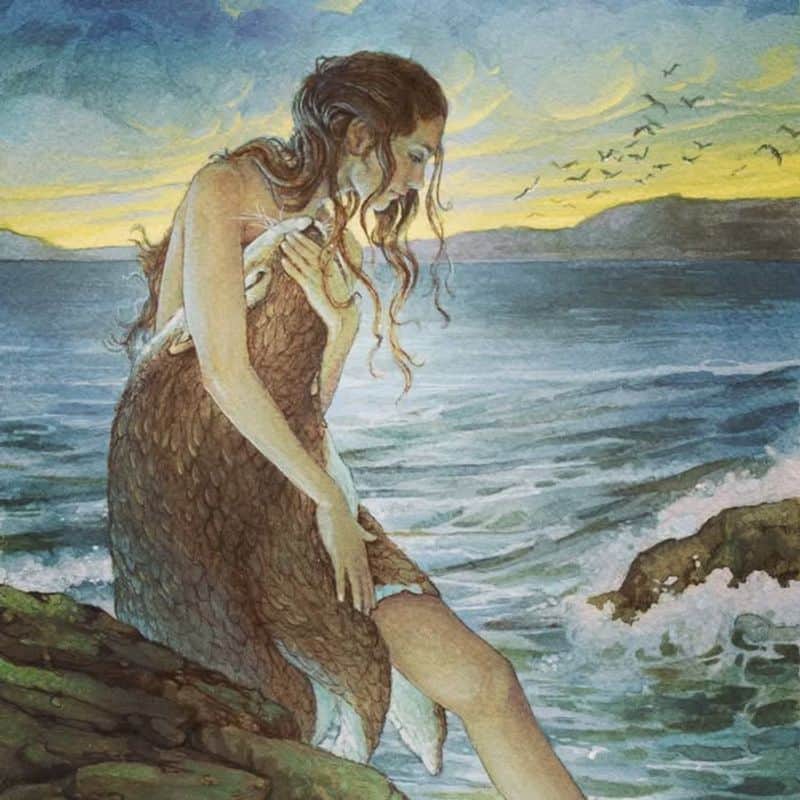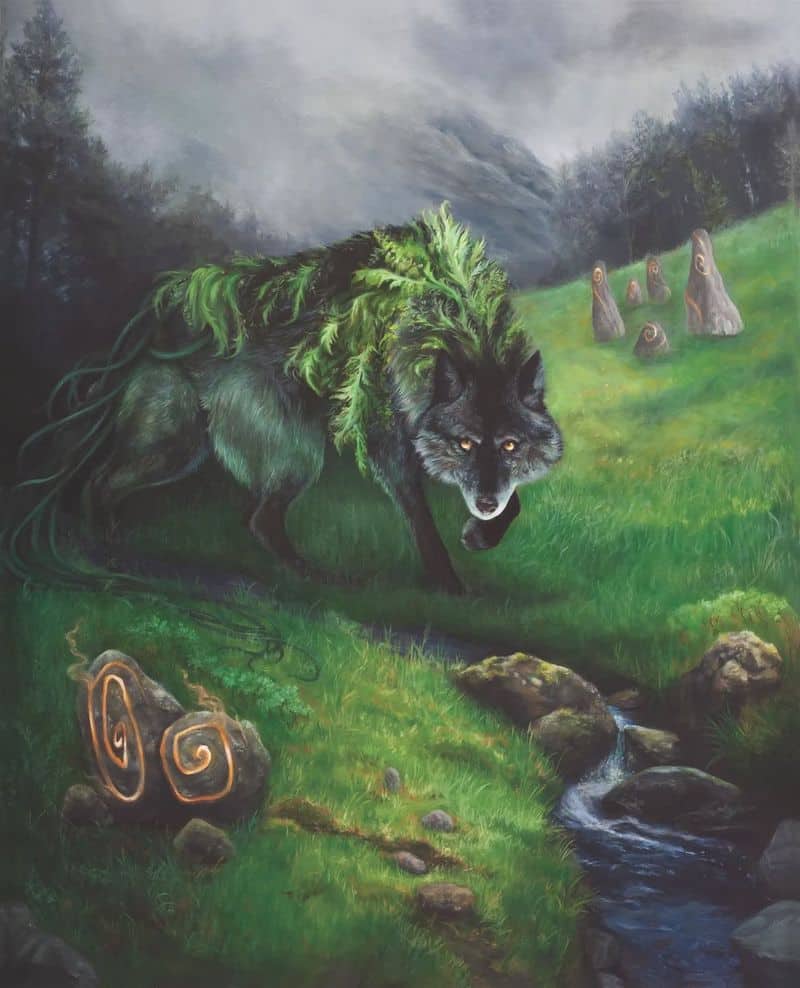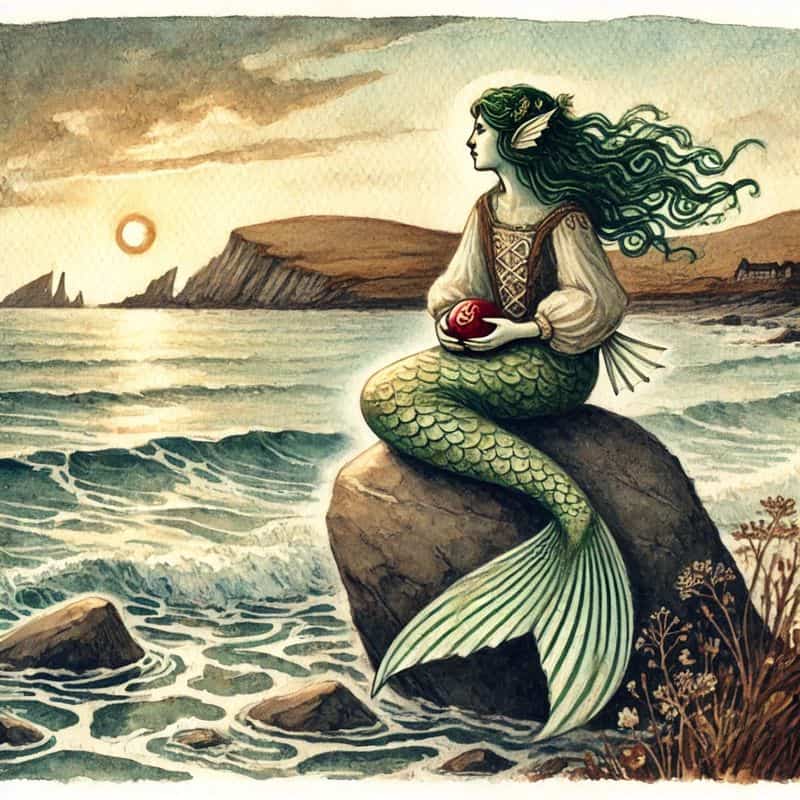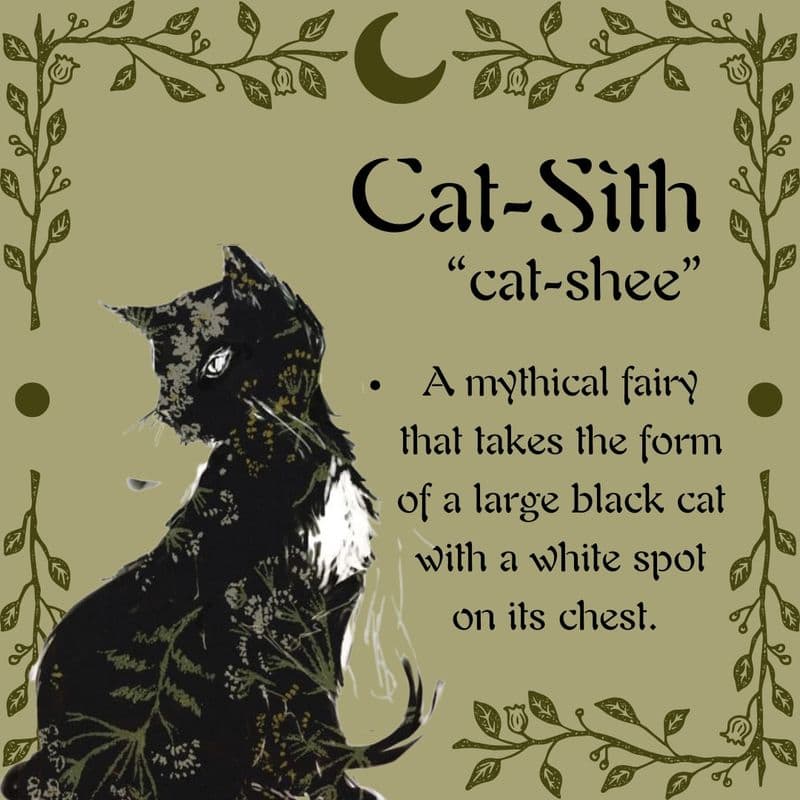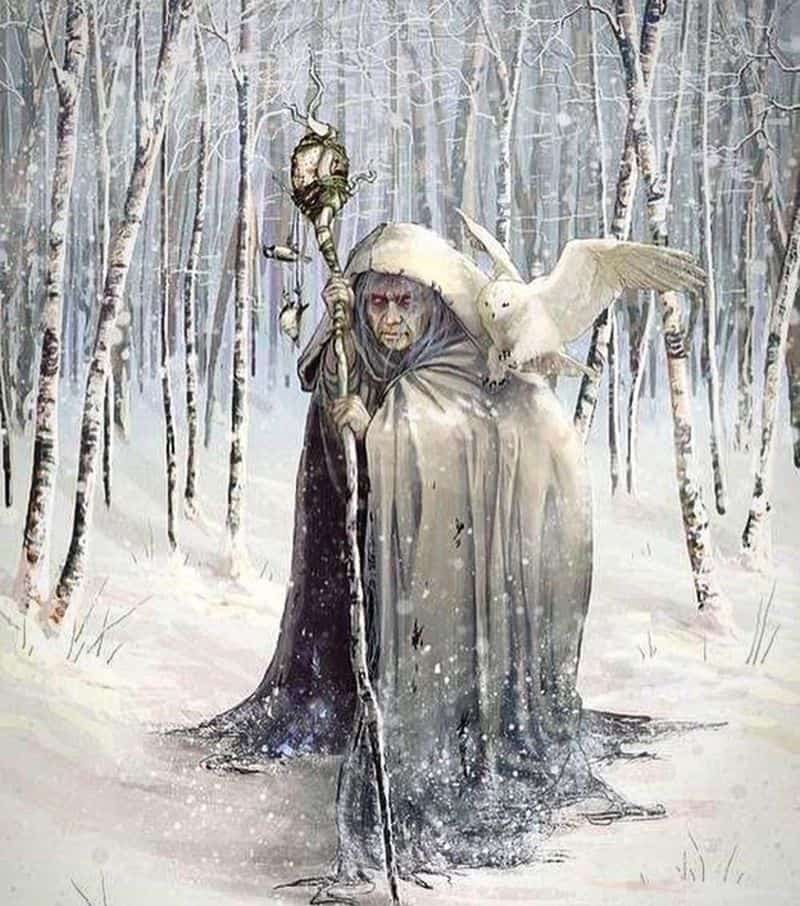Celtic mythology brims with extraordinary creatures that have fascinated people for centuries. These magical beings range from shapeshifters lurking in misty lochs to spectral harbingers foretelling doom.
Rooted in ancient Irish, Scottish, and Welsh traditions, these creatures represent the deep connection our ancestors felt with the natural and supernatural worlds around them.
1. Banshee: The Wailing Harbinger
Ghostly female spirits whose heart-stopping wails pierce the night, banshees serve as messengers between our world and the beyond. Known as bean sídhe in Irish, these supernatural entities appear as pale women with flowing white hair, often spotted combing their locks by riverbanks.
Banshees attach themselves to specific Irish families, particularly those with ‘O’ or ‘Mac’ in their surnames. When death approaches a family member, the banshee releases her bone-chilling cry—a sound so haunting it freezes blood and raises goosebumps.
While feared, banshees aren’t evil by nature. They simply perform their ancient duty as death’s heralds, connecting the living to ancestral spirits waiting beyond the veil.
2. Kelpie: The Deadly Water Horse
Lurking in the depths of Scotland’s lochs and rivers, kelpies embody the treacherous nature of water. These shapeshifting spirits most commonly appear as magnificent black horses with dripping manes standing by shorelines, tempting weary travelers to mount them.
Sticky, magical skin ensures riders cannot dismount once seated. The kelpie then plunges into the deepest waters, drowning its victim before devouring everything except the liver and heart. Some tales describe kelpies assuming human form—handsome men with seaweed in their hair or beautiful women—to lure unsuspecting victims.
Parents often used kelpie stories to warn children away from dangerous waters, turning natural caution into supernatural fear.
3. Selkie: Seal-Skin Shapeshifters
Graceful beings of dual nature, selkies live as seals in the sea but shed their skins to become beautiful humans on land. Their enchanting legend swims through the folklore of coastal Ireland and Scotland, especially the Orkney and Shetland islands.
Many tales tell of male fishermen stealing female selkie skins, forcing these creatures into marriage. Though they might bear children and appear content, selkies forever yearn for the sea. Should they ever rediscover their hidden sealskin, they’ll immediately return to the ocean, sometimes leaving broken-hearted families behind.
Unlike mermaids who lure sailors to watery graves, selkies typically show kindness to humans—unless their freedom is stolen from them.
4. Púca: The Trickster Shapeshifter
Mischievous and unpredictable, the púca (or pooka) roams the Celtic countryside after nightfall. This shape-shifting fairy creature can take numerous animal forms—most commonly a sleek black horse with golden eyes, but also goats, hares, dogs, or even humans with animal features.
Country folk leave small offerings for the púca, especially on Samhain (Halloween), when its power reaches its peak. Despite its reputation for mischief, the púca isn’t entirely malevolent. Sometimes it offers sound advice or performs household chores for those who treat it with respect.
Farmers consider November 1st “Púca Day”—the one day this trickster spits on wild berries, making them inedible thereafter and marking the end of foraging season.
5. Cù Sìth: The Emerald Hound of Death
Stalking the misty Scottish Highlands, the Cù Sìth stands larger than any mortal dog, with shaggy fur in an otherworldly shade of green or white. Silent paws the size of human hands allow this fairy hound to approach without warning, while its curled tail coils above its back like a trophy of conquered souls.
The creature barks just three times. Hearing the first bark means danger approaches; the second signals your last chance to seek safety; by the third, death becomes inevitable as the hound claims your soul for the fairy realm.
Shepherds particularly feared the Cù Sìth, believing it would steal away pregnant ewes to provide milk for fairy children in the Otherworld.
6. Dullahan: The Headless Horseman
Galloping through the night on a jet-black steed comes the Dullahan, Ireland’s terrifying headless horseman. Unlike his horse, the Dullahan carries his own head tucked beneath his arm or held high like a lantern, its eyes constantly moving and its mouth frozen in a hideous grin stretching ear to ear.
Armed with a human spine whip, this fearsome fairy calls out the name of the person about to die. When the Dullahan stops riding and speaks your name, no doors, locks or prayers can save you—death arrives instantly.
Only gold repels this creature. Even a small pin of genuine gold will send the Dullahan fleeing in terror, providing rare protection against this unstoppable harbinger.
7. Merrow: Enchanting Sea Dwellers
Merrows swim through Irish coastal legends as the Emerald Isle’s answer to mermaids, though with distinctive differences from their Mediterranean counterparts. Female merrows possess extraordinary beauty, with fish tails and enchanting voices, but also special webbed fingers and magical red caps called cohuleen druith.
Male merrows present a startling contrast—pig-like features, scaled bodies, and pointed teeth make them frightful to behold. Both genders depend on their magical caps; without them, they cannot return to their underwater kingdoms.
Clever fishermen who stole and hid a female merrow’s cap could win her as a bride. Many Irish fishing families claim merrow ancestry, pointing to webbed fingers or an unusual affinity for the sea as proof of their magical heritage.
8. Cat-sìth: The Fairy Feline
Prowling through Highland shadows, the Cat-sìth appears as a massive black cat with a distinctive white spot on its chest. The size of a large dog, this supernatural feline strikes fear into the hearts of those who glimpse its glowing eyes in the darkness.
Scottish lore suggests the Cat-sìth might actually be a witch who can transform into cat form nine times. After the ninth transformation, she remains trapped in feline form forever. During funerals, families would distract the creature with catnip or riddles, fearing it would steal the deceased’s soul before the gods could claim it.
On Samhain (Halloween), leaving a saucer of milk for the Cat-sìth brought blessing to kind households but curse to those who offered nothing.
9. Cailleach: The Winter Hag
Ancient beyond measure, the Cailleach reigns as the divine hag of winter, storms, and wilderness. Her name means “veiled one” or “old woman” in Gaelic, reflecting her appearance as a blue-faced crone with one eye, bearing teeth as red as autumn rowan berries and hair white as winter frost.
When she strikes her staff against the ground, winter freezes the land. Mountains formed where she dropped stones from her apron; lakes filled where she forgot to cap her well. The Cailleach tends deer as her cattle and rides wolves across winter skies.
Come Imbolc (February 1st), she transforms into a stone until Samhain or into Brigid, the maiden of spring—embodying the eternal cycle of seasons and the feminine divine in all its aspects.
10. Manannán mac Lir: Sea God of Many Faces
Master of illusion and lord of the waves, Manannán mac Lir isn’t merely a creature but a powerful deity who shapes-shifts between forms. His true appearance shows a majestic figure with flowing sea-green robes and silver armor that shifts like water, riding his supernatural white horse Enbarr who gallops across sea surfaces as though they were solid land.
Manannán commands a fleet of phantom ships and wields a sword called Fragarach (“The Answerer”) that can cut through any armor. His magical cloak creates illusions and fog, while his cauldron provides endless food.
Fishermen left offerings to earn his protection, as Manannán controlled not just the waves but also the boundary between our world and the Otherworld, guiding worthy souls to the afterlife paradise.

